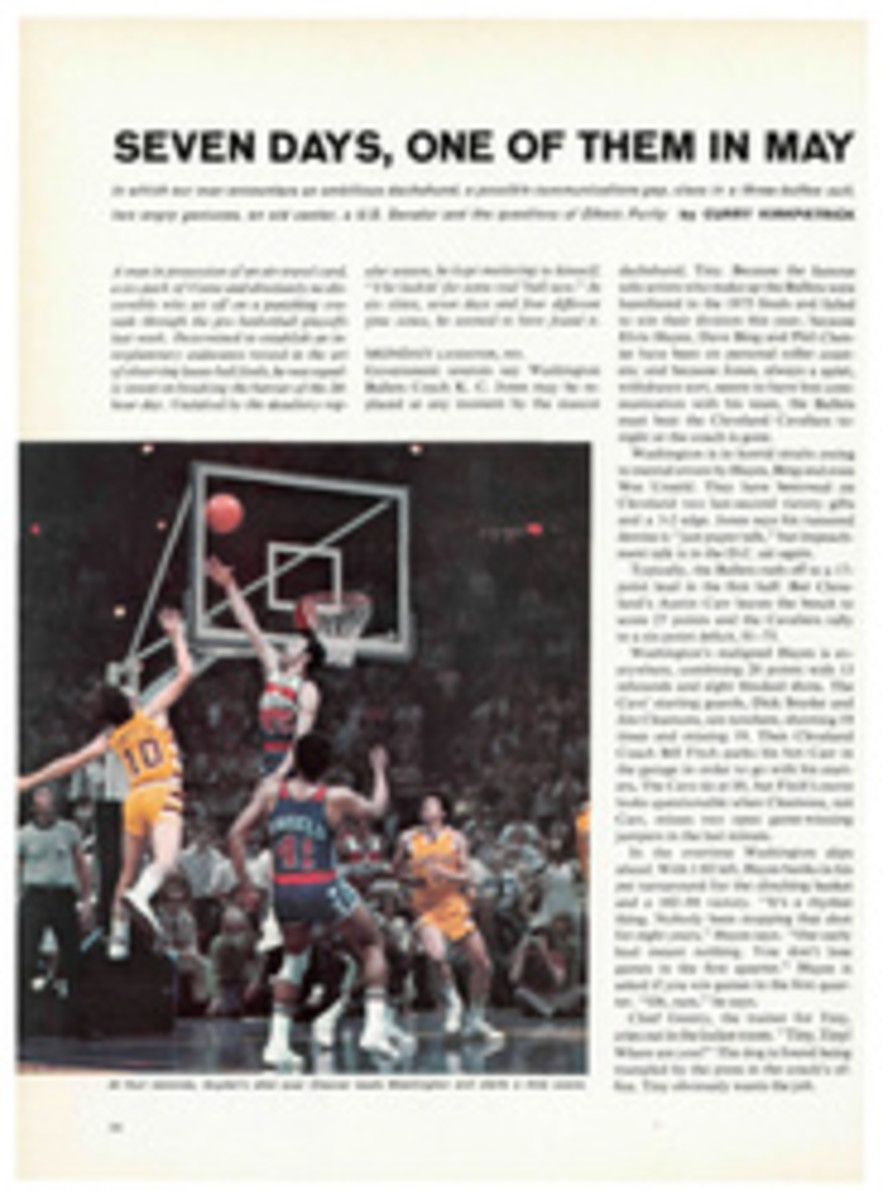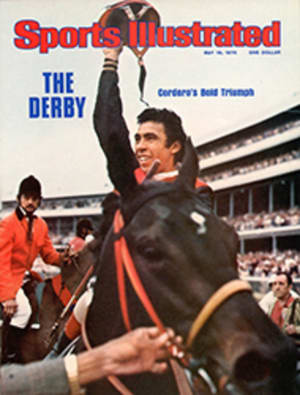
AN AUTO RACING WRITER IS HAUNTED BY GHOSTS OF THOSE WHO DIED AT INDY
"If you're going to be in a racing car, you drive mile after mile after mile. Sooner or later, the odds are you'll make a mistake or somebody working on the car will make a mistake, or the guy who designed the car will have made a mistake. When that happens, generally you lose control.
"But if I get wiped out, and they carry me away in a box, I wouldn't expect anybody to feel sorry for me. It's something I know is a possibility, and I'm not complaining."
—MARK DONOHUE
"On the day of the race, a lot of people want you to sign something just before you get in the car so they can say they got your last autograph."
—A. J. FOYT
Sports are about winning and losing, auto racing is about living and dying. Donohue and Foyt were speaking like marked men, but neither put aside the deadly game. Now it's too late for Donohue, who tried so hard to leave, then returned and was killed. Foyt is drawn by the same magnet, but he keeps playing against the odds.
I have seen too much dying in auto racing. I cover it now like a war correspondent in a battle zone, hating myself for the selfish satisfaction I receive from writing another big story about killing. And nowhere does that feeling haunt me like Indianapolis.
Dying creeps into everyone's conversations there during the month of May. I saw a girl proudly display the burns she received in the 1973 holocaust, a man show his little boy where Bill Vukovich was killed, drivers who wear deformities like a badge of courage to gain recognition, a racing widow lifting her son into the cockpit of a car and telling him he would be a driver someday, too, just like daddy.
I only hope that I never get so nonchalant about such scenes that I can overcome the churning in my stomach on race day at Indianapolis. I can still feel the blast of heat on my arms and face when Salt Walther's car exploded. I can still see them placing Swede Savage in the ambulance, his face white-flecked from the extinguishers and gray underneath.
In no arena outside of ancient Rome has there been a spectacle comparable to that at Indianapolis Motor Speedway in May. But the barbarism in the Colosseum ended some years ago.
There is a history of dying at Indianapolis that precedes the first 500. In races run there in 1909, five people were killed—one driver, two mechanics and two spectators who didn't realize they were paying to participate. All of this should have created second thoughts about the track when the first 500 was run, in 1911, but the promoters hoped that improvements would prevent similar carnage. In any case, the death toll has been held to 53 (not all of them drivers) in the 59 500s.
A man who reaches the starting line of the 500 is to be envied and pitied, whether or not he finishes. There is a contradiction in the sport: it is often the best drivers who die. Unlike most sports, in which the unskilled, the inadequately supervised, is the likely victim, racing kills those who reach the top.
Race drivers are adventurers, probing the limits of their talent, their machinery, the track. Most remain on the safe side of those limits, content to stay on quarter-mile tracks running at relatively comfortable speeds. Accidents are frequent, but seldom fatal.
But a man who sets Indianapolis as his goal is different—more daring, more reckless. He has to beat the men who remain on the safe side to get there. He is willing to surpass rational limits.
At Indianapolis he is pitted against 32 others just like himself. An entire field is emotionally out of control. The man who drives there should have his estate in order. The risks are high. Even when he races elsewhere, his chances of survival are diminished. He is likely to wind up lying on the grass of some obscure track's infield because he was good enough to drive at Indianapolis once.
There's no glory then. He might get a paragraph in the newspapers. He might get a race named in his memory. A fund might be established for the family that sacrificed to let him race.
Even the glory in winning is overrated. Only the dedicated fan is likely to be able to name the winners of the last three races.
The way to win at this game is to quit young. When a man reaches the top, he should get out. Otherwise he might add to the grisly statistics.
Only 503 men have driven in the 59 Indianapolis 500 races. Thirty-five were killed, another 79 died in other races at other tracks. Over the years, 23% of the men who drove in the 500 have been killed in racing. There may be even more deaths, because many of these drivers are still active.
Only 48 men have won the 500, and 14 of them died in race cars, a depressing 29%. Once again, the best are the first to die.
I ask them why. I wonder if the sport is worth the price. I question whether we aren't all less human when such statistics are permitted to exist. They tell me I don't understand. They're right. I don't mourn for Donohue or Savage or the others. I wonder if I don't merely increase attendance by writing about the dangers.

